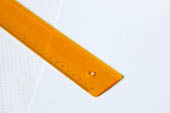
Purpose
To demonstrate how colliding particles from vibration bang into one another to produce sound.
Additional information
There are two types of vibration that can be classified, free vibration and forced vibration. Free vibration occurs when a system is set off and then allowed to vibrate freely. For example, hitting a tuning fork or the top of a glass with a metal instrument and letting it ring. The mechanical system will at its natural frequency before it eventually dampens down to zero. Forced vibration occurs when alternating forces are applied to a system. For example, imbalanced washing machines "shakiness" is a forced vibration. The swaying of buildings during an earthquake is another example of a forced vibration. With forced vibration the frequency of the vibration is the frequency of the force or motion applied.
Sound and vibration are closely related as sound is comprised of vibration frequencies that are capable of being detected by ears. Sound waves are characterized by the generic properties of waves, which are frequency, wavelength, period, amplitude, intensity, speed, and direction. Additionally, polarization is a property of Transverse waves.
Sponsored Links
Required materials
- Plastic or metal ruler (or both)
- Table edge
Estimated Experiment Time
Less than 5 minutes
Step-By-Step Procedure
- 1. Take the ruler and place it so one-half is on the table and the other half is over the edge of the table.
- 2. Firmly hold the half of the ruler on the table with your hand (hold it tightly). Use your other hand to pull up on the part of the ruler hanging over the table.
- 3. Let go of the ruler and listen to the sound it makes. Keep repeating this action. What are you hearing? Move the ruler further off the table. Try again with the ruler further on the table.
Note
Make sure to keep your face clear of the ruler when snapping it! Also ensure there is nothing around the ruler that could break if it accidentally slipped out of your grasp.
Observation
Can you make higher or lower sounds by moving the ruler? Why is this happening? How could you adjust the ruler position to make musical tunes? Try setting up several rulers in a row. Place each one so the part of the ruler that hangs off the edge of the table varies from long to short. Place heavy objects to keep the rulers in place or tape them down with packing tape. Now try and compose a "musical" tune.
Result
When an object (in this case, the ruler) vibrates through the air, particles bang into each other and sound is produced. Pitch is how high or how low a sound is. When the ruler vibrates at a slower speed, the air particles around it are not agitated and so the sound is at a lower pitch.
Sponsored Links
Take a moment to visit our table of Periodic Elements page where you can get an in-depth view of all the elements,
complete with the industry first side-by-side element comparisons!